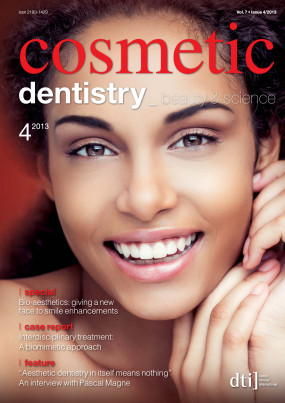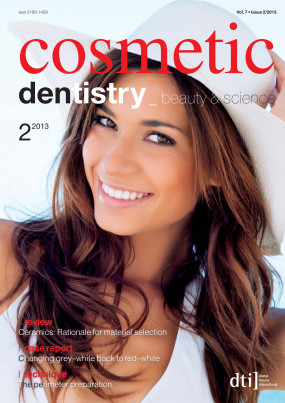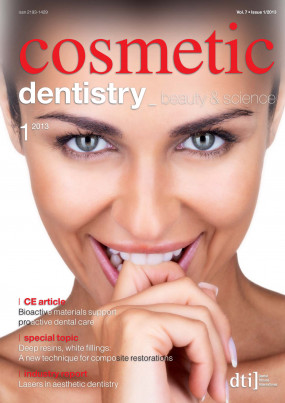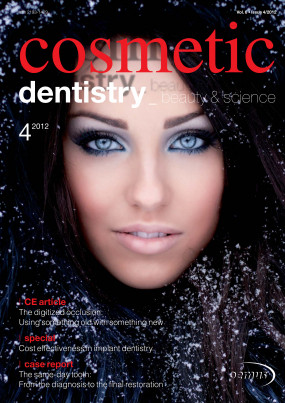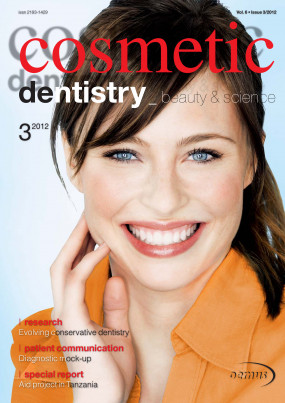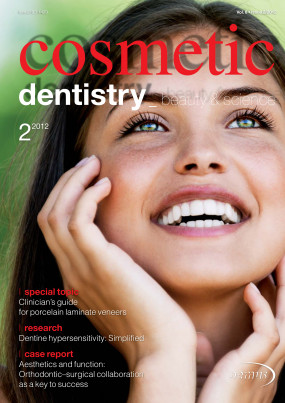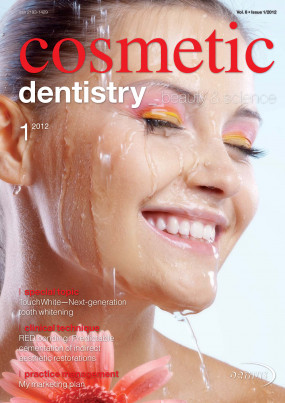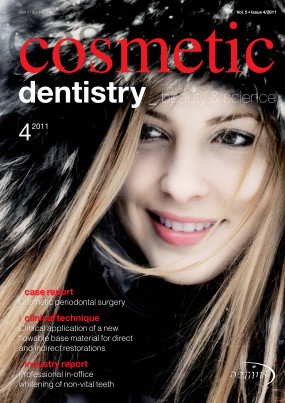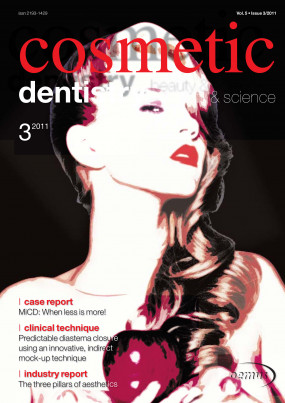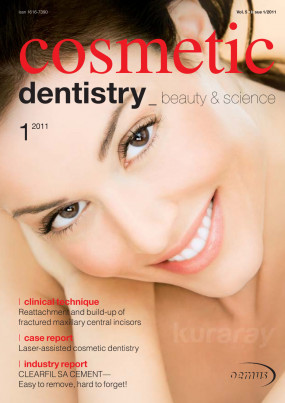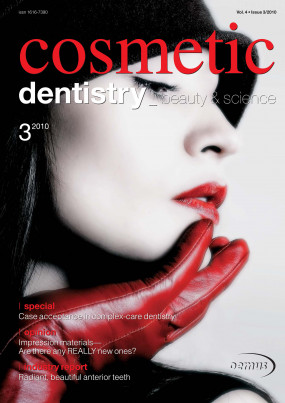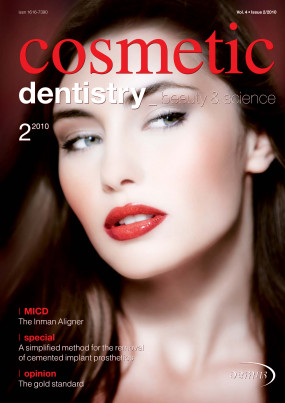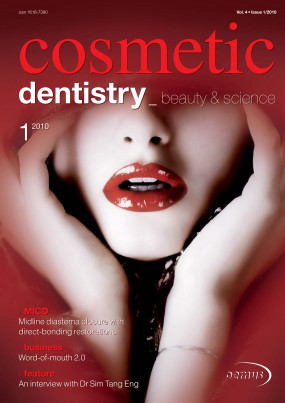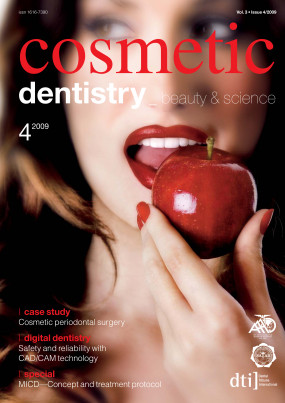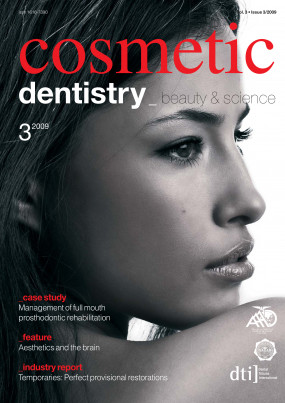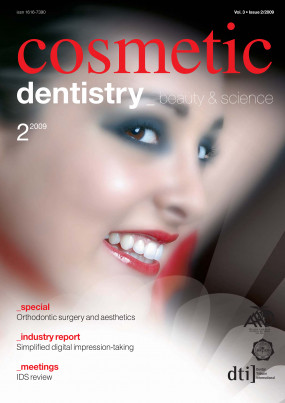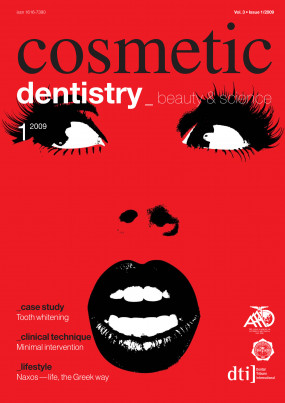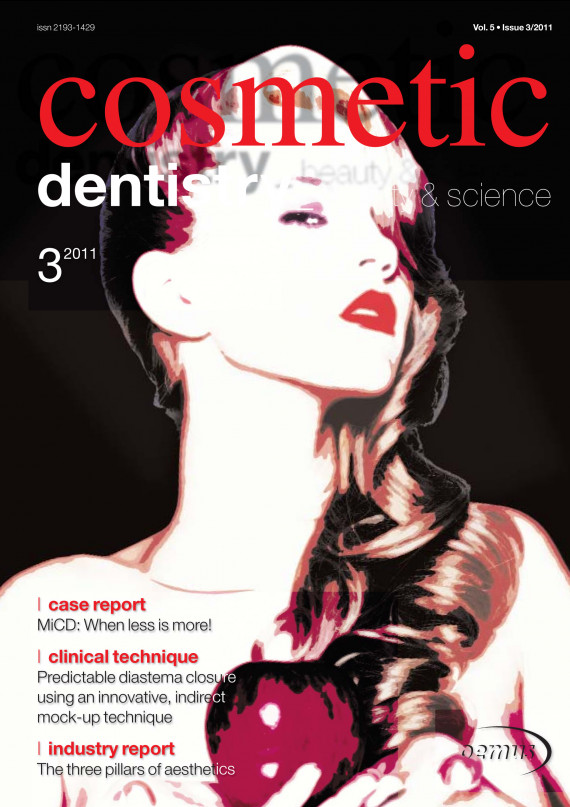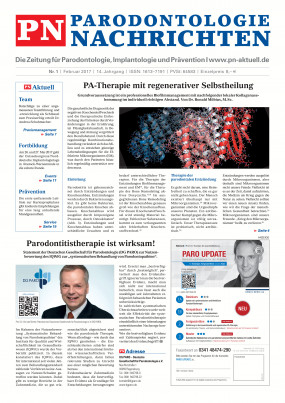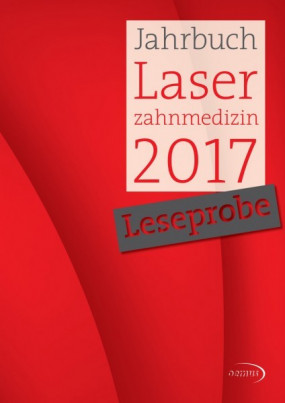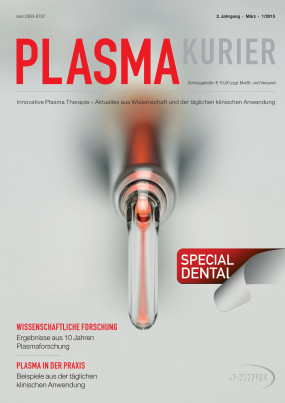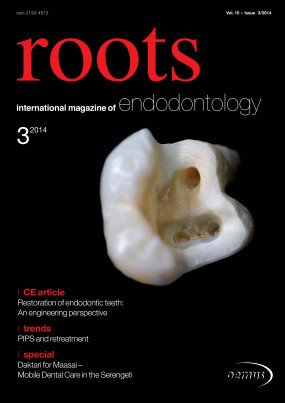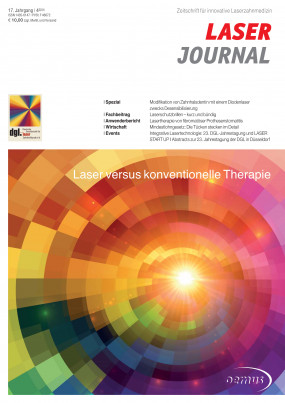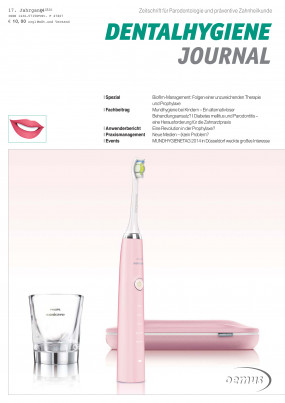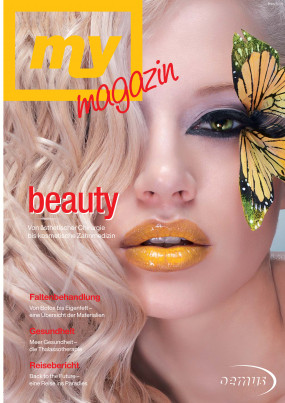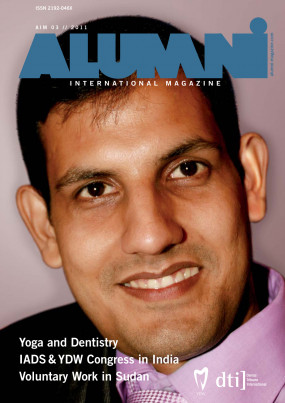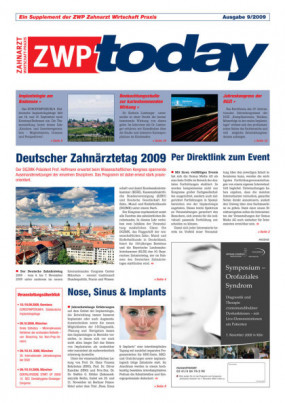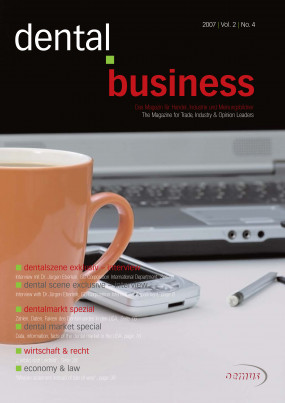Inhaltsverzeichnis
3
Welcome to this year’s third edition of cosmetic dentistry! I hope you enjoyed the first and second editions, which are also available online at www.dental-tribune.com free of charge so that we can truly share our expertise and knowledge...
6
Minimally invasive dentistry (MiD), also known as minimal intervention dentistry and preservative dentistry, is a practice mindset and philosophy. There is no escape from MiD in clinical practice. All clinicians practice MiD periodically whether consciously or unconsciously. As a practice philosophy, there are principles of being, knowledge and/or conduct...
12
Predictable diastema closure using an innovative, indirect mock-up technique
Prof So Ran Kwon & Prof Gerald E. Denehy, USA
Diastema closure with direct composite restorations can be a conservative treatment modality to improve the appearance of a smile. However, without proper diagnosis and treatment planning even the simplest looking -diastema can turn into a very disappointing -situation for the patient, as well as for the dentist...
16
Since Dr Raphael Bowen developed the Bis-GMA -oli-gomer in the early 1960s and Dr Michael Buonocore introduced the phospho-ric-acid etching technique for enamel cavity walls, followed by the development of dentine bonding, aesthetic adhesive resin composite restorations—in areas such as the occlusal surfaces of posterior teeth—were widely performed in Japan before any other country in the world. These aesthetic adhesive restorations have contributed greatly to the improvement of the oral health of the Japanese population...
20
Single-tooth implants in the anterior region permit not only functional reconstruction at the highest level, but also reconstruction for -aesthetic reasons. However, when providing cosmetically attractive treatment, a large number of -parameters need to be taken into account, and -experience and knowledge of physiological pro-ces-ses are essential. The following article will describe the implant-supported reconstruction of an anterior tooth lost as the result of an accident...
26
How often do we encounter heavily stained -anterior teeth in dental practice? Nearly every -clinician has come across this problem at least once. In such cases, an invasive approach is -usually required, i.e. the teeth need to be prosthetically restored with ceramic veneers or even crowns. However, since the concept of “minimal invasiveness” has attracted quite a following recently, it might be a good idea to start rethinking our ways of dealing with stained -anterior teeth. Today’s state-of-the-art composites enable dental professionals to use minimally invasive treatment protocols and achieve outstanding re-storative results...
30
Beauty, that everyone can see—with Amaris from VOCO, highly aesthetic restorations can be achieved in both the anterior and posterior areas. Thanks to convenient handling and simple shade -selection, an endless number of shapes, shades and surfaces can be fashioned quickly with this novel composite system. The material flawlessly matches the tooth substance with its brilliance, natural opacity and coordinated chroma so that even the highest aesthetic demands are satisfied...
31
Today, dentists are looking for a bond -system that not only provides secure handling -(properties), but also offers a technology that -ensures a high quality long-term marginal seal. With the introduction of CLEARFIL SE BOND in 2000, Kuraray introduced a self-etching bonding system that offers powerful hydrolysis resistance for a durable marginal seal and has had an ex-cellent clinical record for the last ten years...
32
Occlusal-proximal restorations in the posterior region are fabricated frequently using preformed sectional metal matrices. These matrices are curved and very thin to facilitate reconstruction of the anatomical tooth shape. A matrix retainer is not required for these matrices. However, they are sensitive, sometimes difficult to insert and even more difficult to remove if they adhere to the composite of the restoration.
34
Victims of domestic violence often suffer both physical and psychological consequences. While some physical wounds gradually heal by themselves, others need professional care. German dentist Dr Jürgen Wahlmann has brought an American project to Germany that offers free dental restoration to men and women survivors of domestic violence...
36
I brought my receptionist and my dental nurse with me to the eighth annual meeting of the European Society of Cosmetic Dentistry (ESCD), which was held from 30 September to 1 October 2011 in Dubrovnik, Croatia. Experience has taught me how important it is to bring team members to meetings so that they gain the same enthusiasm as the dentists and co-operate fully when new ideas from the meeting are introduced into the practice.
